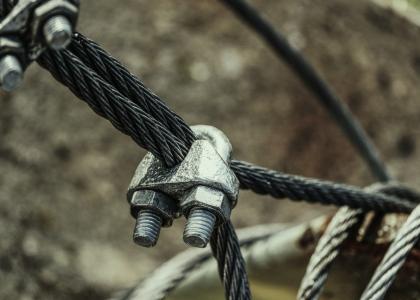Measuring organisational resilience and its benefits

Workplace resilience isn’t just about people – organisational factors and processes also need to be factored in.
Resilience in any aspect of life is an asset, but how do you know how resilient your business and workforce is? How do you measure something that is in turns, sometimes obvious, but often intangible?
Workforce resilience is about more than stoic, battle-weary employees carrying out their duties in the face of challenges and knockbacks. Workforce resilience considers the ability of an organisation or business to collectively position themselves for, or respond to, crises or significant challenges.
See also other articles in this series What is workplace resilience? and Change at work; fears and opportunities.
What do we mean by workforce resilience?
A number of things combine to make up what is known as “workforce resilience”. Different organisations and studies may use varying terminology, but at the heart of it we’re essentially talking about the same things:
People (employees), organisation, processes and systems.
People (employees). Are they engaged with the organisation? How good is communication with peers and from management? How safe do they feel in their role? Are they empowered to make decisions? How is their performance measured? Do they have the necessary equipment and tools to do their job effectively? Do they check-in regularly with their manager?
Organisational. Is the organisation set-up to be resilient? Is the structure robust? On a strong financial footing? Accessing all the support it can get – from government, industry bodies etc? Is the organisation using up-to-date technology and software? Which processes are automated? Does the senior management team communicate effectively? Is there an effective HR department acting as the “glue” between departments and between senior management and teams? Do senior people lead by example? How are they planning for the future?
Processes. Are solid processes and systems in place or being implemented? Is technology up to date? Is the organisation’s data cloud-based? Is that data secure? Do employees work as effectively remotely as they do from the office? Are processes clear and are they modified and communicated as situations change?
Is your workforce resilient?
How your organisation answers the above questions will be a good indicator of how resilient your workforce is. (Here’s a clue: ‘Yes’ should be the answer to many of them.)
The benefits of a resilient workforce are largely apparent – engaged employees operating within a strong culture, secure systems, good leadership, up-to-date technology and financial security. But what about the difference in performance levels between resilient organisations and less resilient organisations?
It may sound like stating the obvious but resilient organisations understand the benefits of a resilient workforce.
MHR’s workforce resilience report shows 55% of the most resilient organisations have an understanding of what constitutes a resilient workforce – something that only 18% of lesser resilient organisations can say. Curiously it’s smaller organisations that understand this more than larger ones, albeit narrowly, at 49% to 43%.
The report found that more resilient businesses had better products and services, adapted to change more quickly, performed strongly from a financial perspective – increased sales and profitability, and had solid and improving reputations.
Most resilient organisations vs least
The report broke organisations into three groups on a resilience scale – most, medium and least. The differences across a number of criteria from the most to least groups was marked. The criteria measured included profitability, revenue growth, innovation, win rates, customer satisfaction and brand reputation.
While there were variations within each criteria the overall average figure where organisations were rated against competitors saw an average figure of 68% for the most resilient organisations against 6% for the least. (The medium group scored at 44%.)
Unsurprisingly there is a direct correlation between workforce resilience and employee performance. The MHR report found that employees in resilient workforces demonstrated higher levels of quality of work and productivity. Additionally, they were more engaged, more positive and more proactive. The scores on this set of criteria were again quite marked when comparing the most and least resilient groups. The most group averaged 78%, the least group just 13%. (Medium came in at 48%.)
The research is extensive and indicates that truly resilient workforces don’t just survive in uncertain times, they can thrive.


